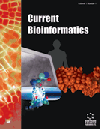
Full text loading...
In recent years, the rapid development of deep learning technology has had a significant impact on the prediction of DNA-binding proteins. Deep neural networks can automatically learn complex features in protein and DNA sequences, improving prediction accuracy and generalization capabilities.
This article mainly establishes a meta-migration model and combines it with a deep learning model to predict DNA-binding proteins.
This study introduces a meta-learning algorithm based on transfer learning, which helps achieve rapid learning and adaptation to new tasks. In addition, normalized Moreau-Broto autocorrelation attributes (NMBAC), position-specific scoring matrix-discrete cosine transform (PSSM-DCT), and position-specific scoring matrix-discrete wavelet transform (PSSM-DWT) are also used for feature extraction. Finally, the prediction of DBP is achieved through the deep neural network model based on the attention mechanism.
This paper first establishes the basis of deep meta-transfer learning and uses the PDB186 data set as the benchmark to extract features using NMBAC, PSSM-DCT, and PSSM-DWT, respectively, and compare the fused features in pairs, and finally obtain the fused feature process. Through deep learning processing, it is concluded that the fused feature prediction effect is the best. At the same time, compared with the currently popular models, there are obvious improvements in the ACC, MCC, SN and Spec evaluation indicators.
Finally, it was concluded that the method used in this article can effectively predict DNA-binding proteins and show more significant performance.

Article metrics loading...

Full text loading...
References


Data & Media loading...

